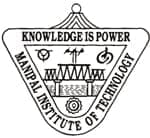
Getting ready for school after a long summer, may require a little routine and structure for a smooth transition. Responsibility and discipline are essential for academic success.
The dog days of summer means that school is just around the vacation corner. It is time to get ready for reading, writing, arithmetic, and structure. No more hanging with the dudes at the video arcade. Say goodbye to the lazy, hazy days of summer and hello to the halls of academia. Starting a routine long before the bell rings can reduce the shock of classroom discipline, procedures, and rules.
An alarm clock is a handy device for any student. It helps the young ones learn to tell time and the older ones to wake up out of a dead sleep. It is an essential tool that helps youngsters learn to take responsibility for themselves. About two weeks before returning to school, have them set the clock for an agreed upon time so they can get used to rising on command.
Once up, alive, and well, children should begin the task of dressing themselves. The sooner taught, the better. It teaches them skills of independence and responsibility. The little ones will (hopefully) gain a sense of color scheme when dressing. Let them choose what to wear. If it is within the district’s dress code (and many of them are quite conservative these days), let them wear it. Fewer hassles for the parents means more autonomy for the kids.
Offer one thing for breakfast most of the time. Cereal is a great start for the day. Keep several boxes around so the kids will have a choice of which ones to ravage for the prize. Children can usually do the cereal breakfast themselves. It means more independence and ownership of their lives. Parents are providing the structure of a routine for offspring participation. Allow them to participate as independently as possible, and praise them when they do.
If the kids have not visited a library all summer, now is a good time. Establish a routine for reading in the home. One-half hour to an hour per day is reasonable for most children. Get picture books for the preschoolers so they can get in on the action. Primary grade students need practice reading aloud and reviewing those tough sight words that cannot be sounded out. The teenagers can read aloud to the younger ones, and the younger ones can read to the preschoolers. Parents who model reading as a valued skill contribute greatly to their children’s education. Nothing, absolutely nothing improves reading ability than reading practice. Period. Practice what you preach, parents.
Parents, do not send children to school after a long summer without reviewing basic math facts. This does not mean quantum formulas, algebraic functions, and or calculating vectors. Review basic addition, subtraction, multiplication, and division facts. If there is a finger counter in the family, get some neon-colored tagboard and a black marker from one of your local ‘Marts. Cut the tagboard into four by six rectangles, and have the child make flash cards–not you, the child. Remember–ownership of responsibilities.
If just a little bit of work is done at home to acclimate youngsters to routine, discipline, and expectations, the beginning days of the school year will be much smoother. The students will feel they have a little edge in the classroom, and they will begin the year feeling successful. Moreover, what is motivation? It is the feeling of success that makes one want to repeat a desired (hopefully) behavior.
Adapting to a new routine will be a piece of cake because they just did it at home! The books they read and the math they practiced (remember, basic facts) will give them confidence when the teacher sets about assessing the class’ abilities. The first two to four weeks of school is spent assessing every student’s reading and math level, reviewing the previous year’s academics, and introducing new curriculum. What a boon it is for a child to have a grip on classroom expectations while others sit in shock of discipline, procedures, and rules.

Be the first to comment